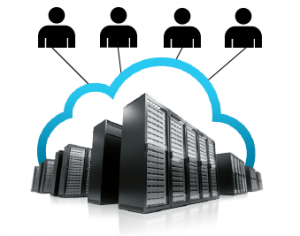Multi-tenant architecture refers to the mode of operation wherein a single instance of a software application attends to multiple tenants. Each client is called a tenant. They may represent enterprises that gained access to the multi-tenant application or the multiple applications competing for intrinsic resources. Tenants are permitted to customize certain parts of the application such as business rules, workflow, user interface etc. but they cannot customize the application code. Logically the tenants isolated but physically they are integrated. Using a vulnerability management solution can come under better manageability.
Tenancy can be either single or multi. In a single tenancy architecture, each customer has their own software instance and may be provided access to code and the provider has to touch multiple instances of the software in order to make updates whereas in a multi-tenant architecture update has to be made by the provider only once. But the meaning of multi-tenancy architecture widened when it comes to cloud-computing. A provider of Saas can run one instance of its application on one instance of a database and deliver web access to multiple customers. In this case, each tenant’s data is remote and cannot viewed by other tenants. While some clouds use architectures based on virtualization to segregate tenants while others use custom software architectures for this purpose. More customers supported on fewer nodes, and fewer nodes mean reduced cost and more efficiency. However, a patch management solution is also important.
Key requirements to keep multi-tenancy safe:
The resources allocated to one tenant must not be known to other tenants and they shouldn’t have access to each other’s resources.
Role-based security is important. An overall administrator will have knowledge of the resources which are setup and also deployed. But that doesn’t give permission to the overall administrator to execute functions associated with single-tenant environments.
In a multi-tenant environment, the tenant administrator is able to allocate the management and access capabilities to suitable administrators within the tenant. Tenant administration must be role based.
Why is multi-tenancy important?
The rising popularity of cloud computing and virtualization has made the importance of multi-tenancy in today’s IT world quite crucial. Multi-tenancy is turning out to be a pre-requisite for many organizational deployments to avoid sharing resources among multiple groups.
Saner’s multi-tenant architecture
Architected for speed and scalability, Saner supports a multi-tenant architecture and a large number of endpoints without having to rely on a hierarchical server infrastructure. Based on a scalable BigData architecture, thousands of devices easily supported by a sole server without degradation in performance. A single server can manage multiple customer’s or business unit’s endpoint data, each compartmentalized neatly with different access rights. Multiple segments of a corporate network managed by different users. Multiple managed accounts created with different accesses based on their role.
Saner’s multi-tenant architecture offers services which:
- are totally safe and shielded from any influence by other tenants.
- allows maximum sharing of resources across tenants but at the same time is able to differentiate data belonging to other clients.
- allows tenants to use the same building blocks but the workflow or appearance of the application may be diverse for different tenants.
Without multi-tenancy, the benefits such as flexibility, ability to scale and adaptability and cost-efficiency reduces. Duplicate infrastructure or instances required and complexity of the setting is greater than before.
- Rini Thomas

